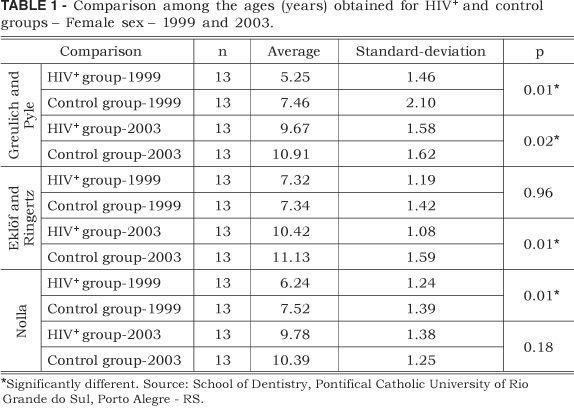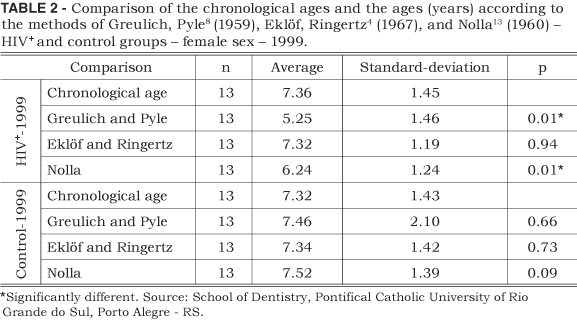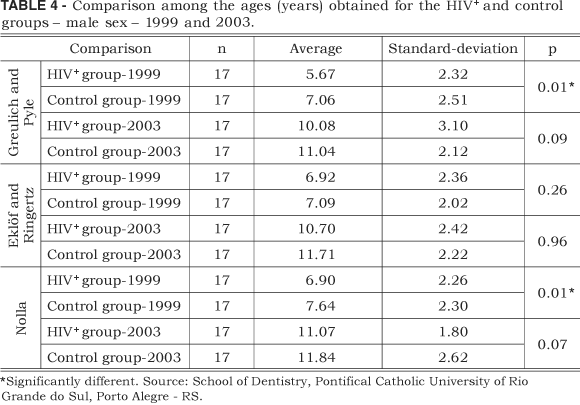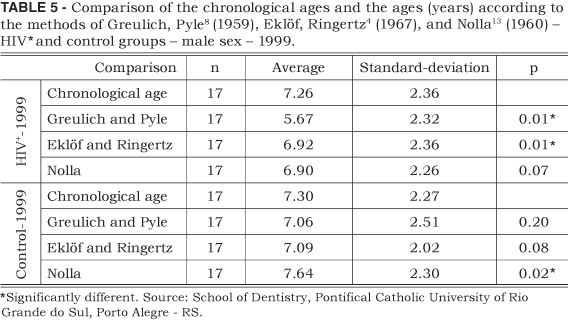The goal of this study was to evaluate skeletal, dental and chronological development in an HIV-positive group of children, as compared with a control group, during a four-year period. Panoramic radiographs and hand and wrist radiographs of 60 children were taken. The children, of both sexes, aged 5 years and 2 months to 15 years and 5 months, were selected as follows: 30 HIV-positive volunteers who had acquired the disease vertically, and 30 volunteers who did not present the HIV infection or any other systemic disease. All radiographs were technically standardized and analyzed according to criteria established by Nolla (dental age), Greulich and Pyle (bone age), and Eklöf and Ringertz (bone age). The results were submitted to Student's t-test at a 5% level of significance. Based on the comparison between the chronological age and the dental or the skeletal age, significant differences were observed between HIV-positive and HIV-negative children, both in 1999 and in 2003 (p < 0.05). Considering the results obtained with the methodology used, it was concluded that HIV-positive children of both sexes presented delayed bone development despite the administration of antiretroviral drugs, and that HIV-positive female children presented younger dental ages compared with their chronological ages in 1999 and in 2003; and HIV-positive males, in 1999.
Age determination by skeleton; Age determination by teeth; HIV; Acquired immunodeficiency syndrome






